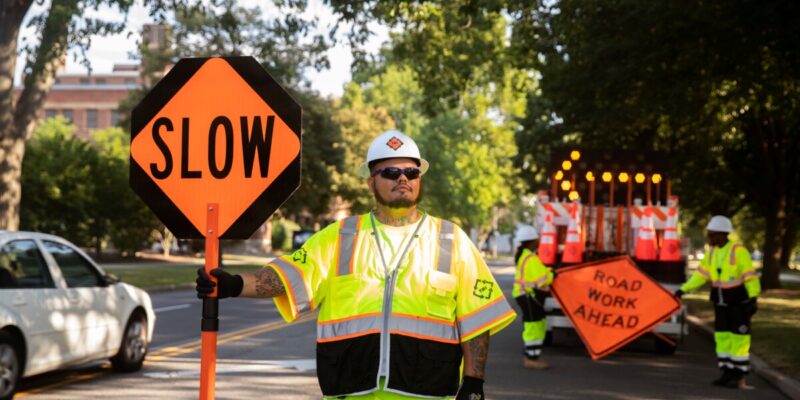Managing high-traffic areas is a crucial task that requires careful planning and execution. Whether it’s a busy urban intersection, a construction zone, or a major event, traffic control must be efficient to ensure the safety of drivers, pedestrians, and workers. The effectiveness of traffic management directly impacts public safety, project timelines, and overall traffic flow.
1. Assessing Traffic Patterns and Needs
Before implementing any traffic control measures, it’s essential to conduct a thorough assessment of the area. Traffic engineers and control professionals analyze the volume, speed, and type of vehicles passing through. They also consider pedestrian traffic, weather conditions, and the time of day when the area is most congested. This data helps create a plan that accommodates all users and adjusts to changing conditions.
Accurate data allows traffic managers to determine the best locations for signage, barriers, and detours to reduce congestion and improve safety.
2. Use of Proper Signage and Equipment
High-traffic areas require clear, visible signage to guide drivers and pedestrians through potentially confusing or dangerous situations. In addition to static signs, electronic message boards can provide real-time updates, helping to prevent delays and accidents. Cones, barriers, and barricades are also used to direct traffic and create safe zones for pedestrians or workers in construction zones.
The use of proper signage is critical, as it ensures that drivers are aware of changes to the usual traffic flow and can navigate safely.
3. Trained Traffic Control Personnel
Trained personnel play a key role in managing high-traffic areas. Flaggers and traffic control officers are trained to handle heavy traffic volumes, often in challenging conditions such as construction sites, special events, or emergencies. Their presence not only ensures smooth traffic flow but also provides a human element of communication, where they can adjust the plan in real-time if necessary.
Ensuring that personnel are equipped with the right tools, such as high-visibility clothing, radios, and stop/slow paddles, is essential for effective traffic management.
4. Contingency Planning
High-traffic areas can be unpredictable. Events like accidents, bad weather, or unexpected road closures can disrupt even the best-laid traffic control plans. This is why having a contingency plan is vital. Backup routes, additional personnel, and mobile electronic signs can help divert traffic or provide real-time updates, minimizing delays and confusion.
Conclusion
Effective management of high-traffic areas requires a combination of proper planning, equipment, and trained personnel. By assessing traffic patterns and employing best practices like clear signage and contingency plans, traffic managers can ensure smooth and safe traffic flow. For comprehensive traffic management solutions, Salus Traffic Control offers expert services designed to handle even the most challenging high-traffic areas.








Comments